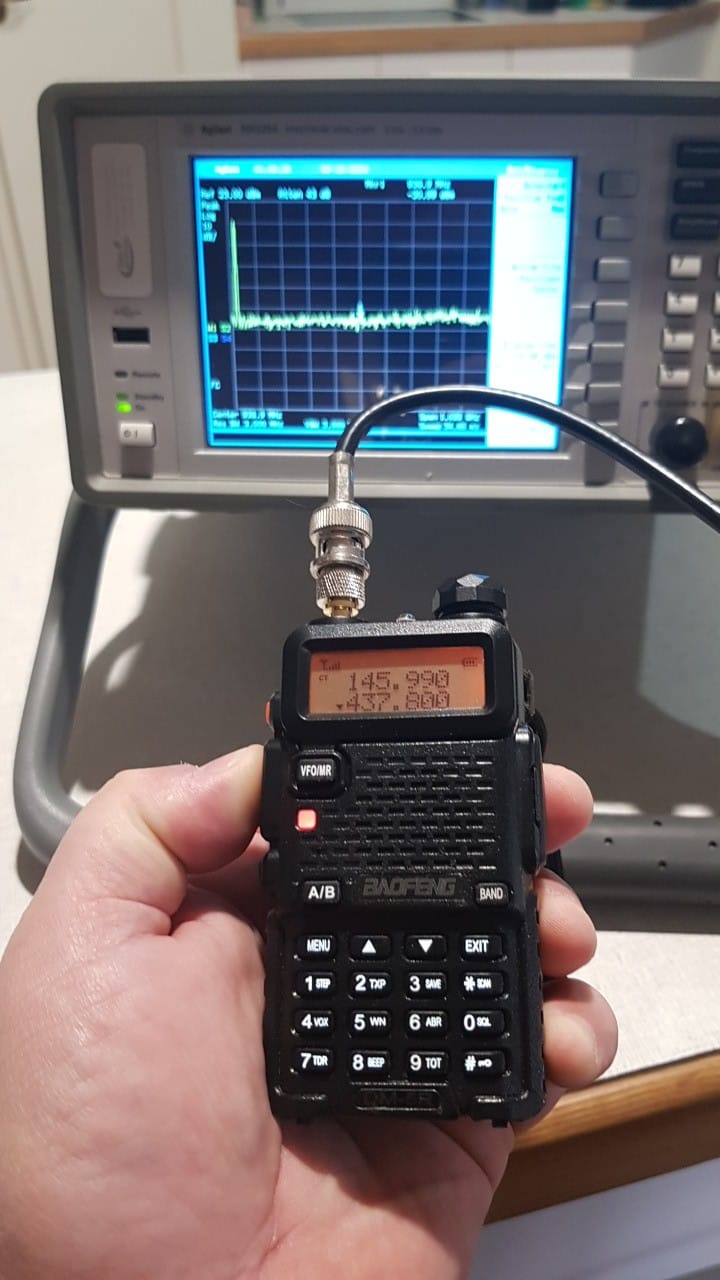
One topic that is fascinating to watch rolling round on Facebook is the reactions of the crowd who hate the inexpensively made Baofeng radios. People talk about how you will set off all the repeaters in range on all the frequencies, simply by keying one up.
I own a couple of these radios – they are great little workhorses. I decided to chuck one onto a Spectrum Analyser to see the actual output.
My analyser is a Agilent N9320, which covers 9Khz to 3Ghz, and was a special treat I purchased earlier this year from a fellow who used it for verifying digital transmitter installations at remote sites. It is particularly useful as it has a tracking filter installed allowing me to verify bandpass filters.
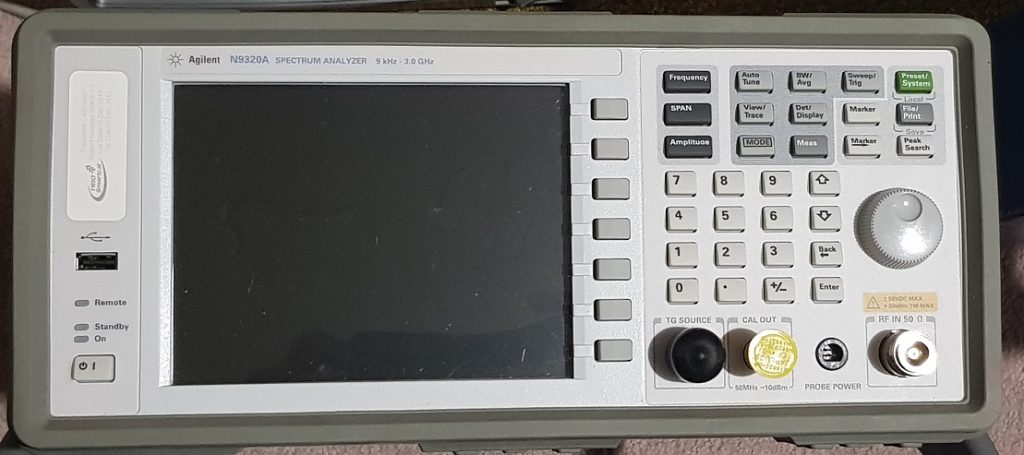
Now, I know for a fact that some of the models are bad when it comes to output purity – barely achieving 35dB. So, how would my DM-5R hold up.
I like my little DM-5R. It was an experimental purchase a couple of years ago to supplement my TYT MD 380. The MD-5R is a DMR capable radio, but it is only Tier 1, meaning that its transmissions occupy Slot 1 and Slot 2. Because of that its not suitable for use with the local DMR repeater, but it is completely capable of use with my hotspot on 439 Mhz. I actively use this radio with my dual band Arrow Antenna trying to make ISS contacts, and it is great.
I connected it to the analyser with a 30dB, 10W terminating load and a further 10dB to make sure that I wasn’t overloading the input to the analyser, and fired it up.
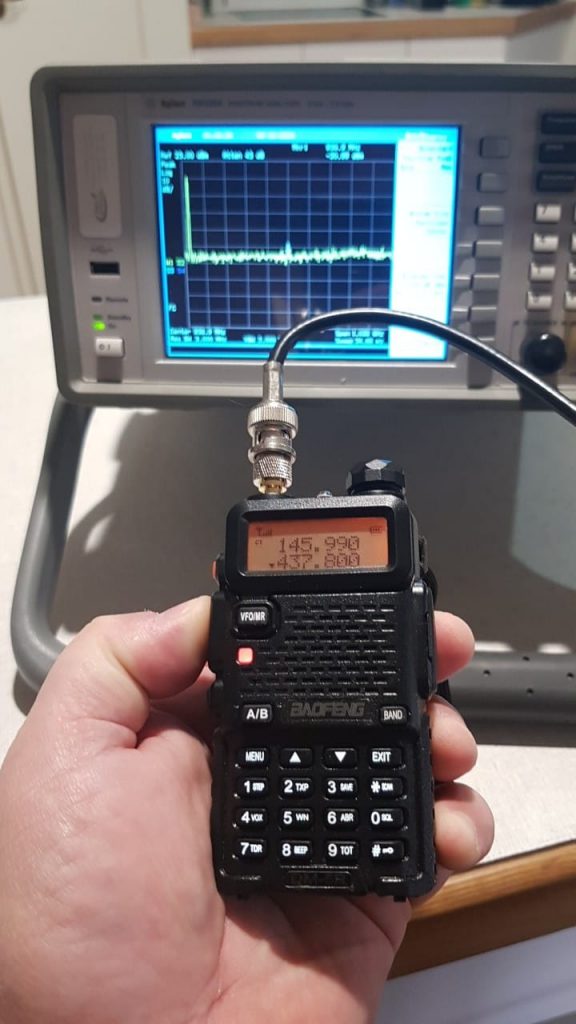
How did it do at 437.800 Mhz? Not bad at all. Here is the result showing that all spurious emissions up to 1.5Ghz were in the noise.
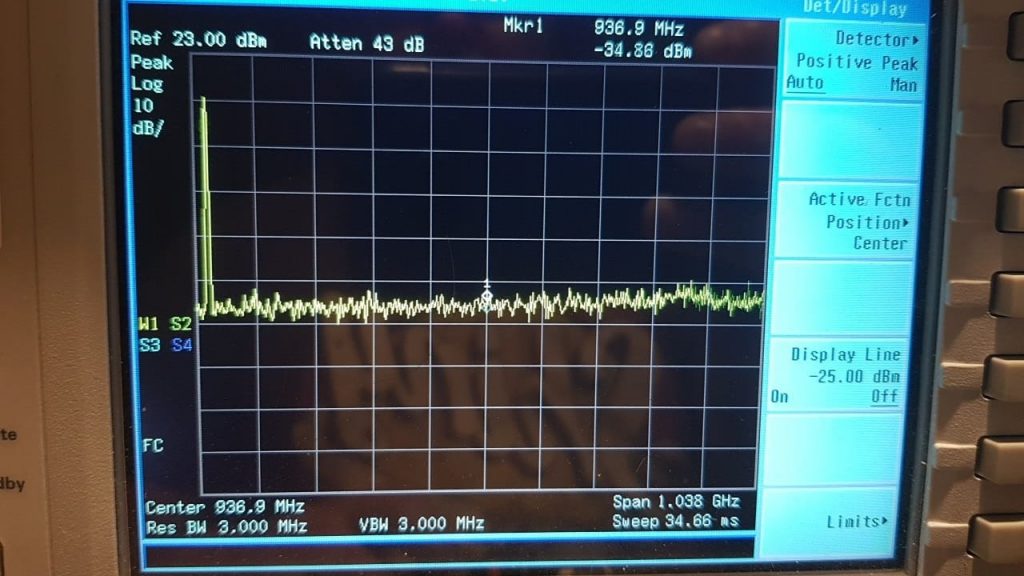
And a repeat at 145.990Mhz also indicated that the spurs were also nice and low, at something like 42dB down from the main carrier.
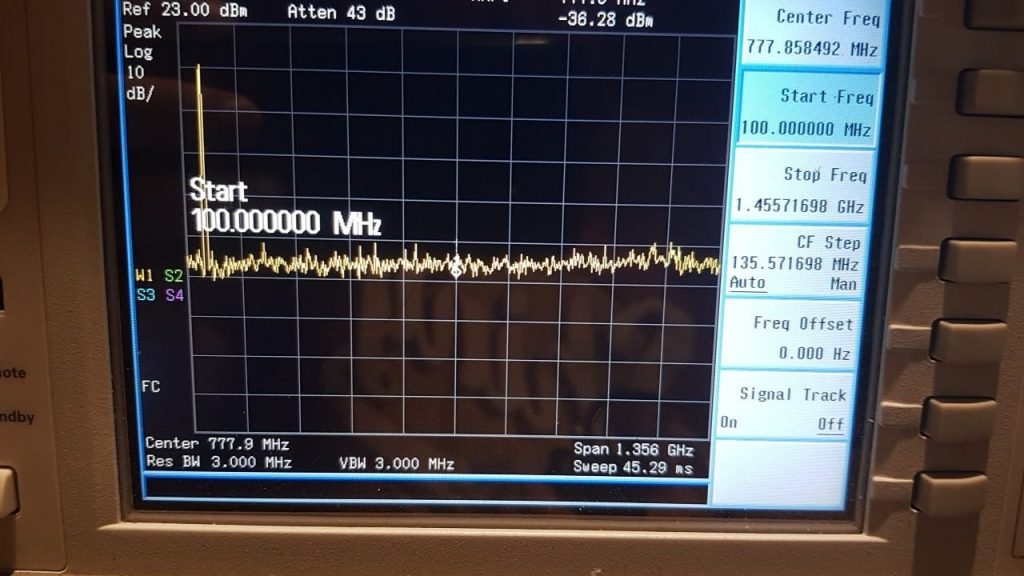
So, as they say in the classics.
- Don’t believe anything you read on the Internet until you verify it yourself.
- Not all Baofengs are crap.
- Sometimes, nice things are allowed to happen.

